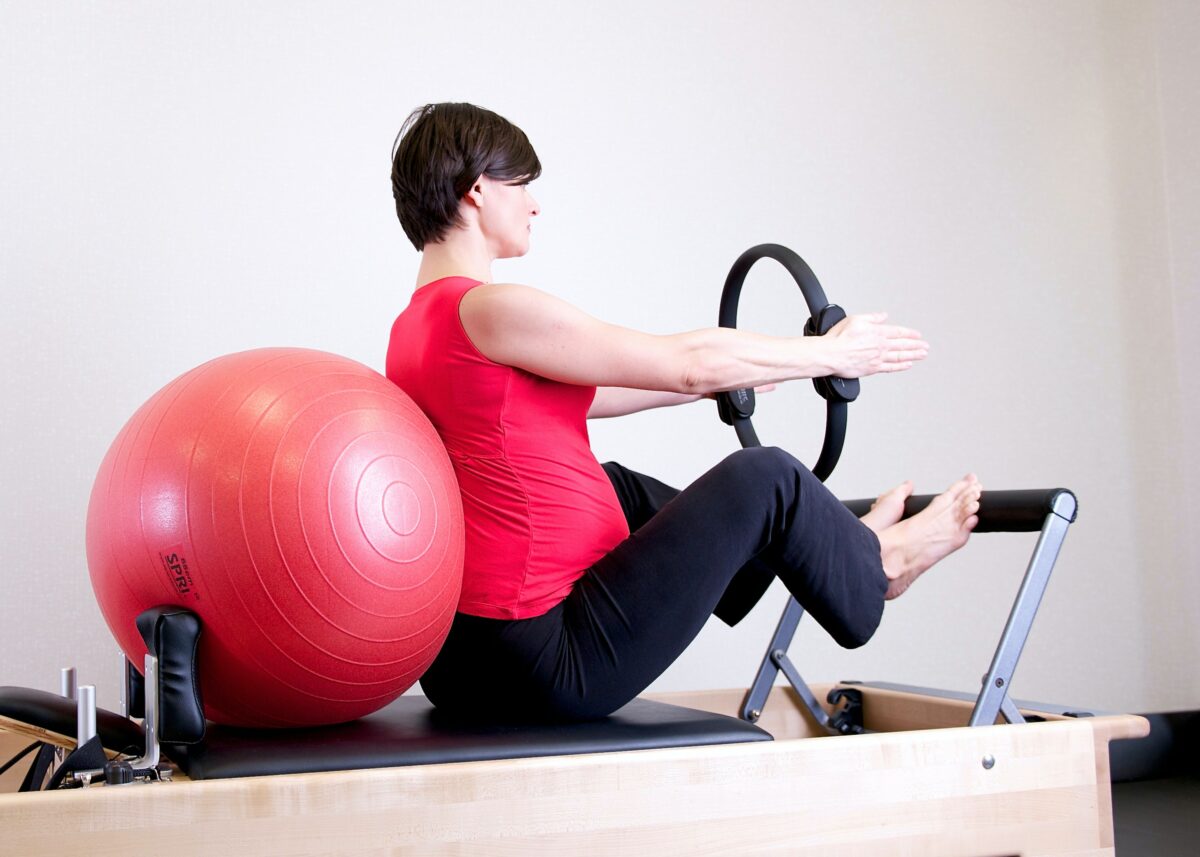Among the many physical changes of pregnancy is an ever-expanding tummy. As your abdomen grows, the muscles that provide support for your core need to remain strong and require a shift in the type of exercises required to build strength.
Pregnancy-induced changes cause the connective tissue that joins the two sides of the rectus abdominis muscles “six-pack muscles” (they span vertically from your ribs to pelvis) to thin and widen, separating the recti muscles’ two sides. This thinning and widening of the two recti muscles’ distance is called a “diastasis recti.”
The development of a diastasis recti is extremely common during pregnancy, especially third trimester, and postpartum. It is not pathologic unless it interferes with activities and quality of life. The incidence and degree of separation can be increased by:
- Rapid changes in weight
- Obesity
- Genetics
- Age
- Multiple pregnancies
- Poor body mechanics
It’s important to be aware of the tension put on the diastasis recti to help avoid increasing tension and further separation. It is important to be mindful of movements that may increase midline tension.
What to avoid:
- *Sit up type exercises (puts a lot of pressure on your midline with the loaded spinal bending). However, after delivery or in the 4th trimester, consult with a pelvic health physical therapist for exercise recommendations on how to optimize rectus abdominus function, which will likely include curling up types of activities.
- *NOTE: This type of curling exercise can be very helpful when performed correctly at the appropriate time. If you have questions, consult with a pelvic health physical therapist.
- Poor body mechanics (twisting when lifting, raising up from a supine position without support).
- lifting heavy objects if that is not part of your normal pre-pregnancy exercise routine.
- Bearing down while holding your breathe when lifting or toileting.
Improving abdominal support with proper exercises can help prevent musculoskeletal discomfort and speed postpartum abdominal recovery. As your pregnancy progresses, you won’t be able to strengthen core muscles with this movement effectively.
Instead, focus on exercises that target the transverse abdominis muscle, a corset-like band of muscle that is crucial for maintaining good belly support.
Best abdominal exercise for pregnancy:
- Isometric contractions of the transverse abdominis in a variety of positions (sitting, standing, on hands and knees, side lying)
- Supine and modified supine (after the first trimester) leg slides and knee raises and extensions. NOTE: this does not apply to everyone. If you are a weight lifter or avid exerciser, then these may be way too easy and not load your tissues enough. This is more for women who are inactive or minimally active leading into pregnancy.
- Working functionally to provide abdominal support with movement by making a habit of tightening the lower tummy and holding as you lift, bend, and move. Make sure to match the amount you’re tightening with the difficulty of the task. You do not need to tighten as much when lifting a kleenex. You should tighten more if lifting a heavy grocery bag. Think about the muscle as a “dimmer switch” with the ability to span a range of tightness as opposed to an “on/off” switch.
- Use your breathing to enhance your ab exercises by blowing out as if trying to fog your glasses to clean them as you are doing each contraction (you’ll feel how that pulls your tummy inward).
- Practice the “basic breath” where contract your lower tummy and pelvic floor and hold as you keep breathing normally. Use the basic breath to tighten your tummy and pelvic floor before lifting.
Benjamin DR, van de Water AT, Peiris CL. Effects of exercise on diastasis of the rectus abdominis muscle in the antenatal and postnatal periods: a systematic review. Physiotherapy. 2014;100(1):1–8
Berg-Poppe P, Hauer M, Jones C, Munger M, Wethor C. Use of exercise in the management of postpartum diastasis recti: A Systematic Review. J Women’s Health Phys Ther. 2022;46(1): 35-47. doi: 10.1097/JWH.0000000000000231
Dufour, Sinéad PT, PhD1; Bernard, Stéphanie PT, MSc2; Murray-Davis, Beth PhD, RM3; Graham, Nadine PT, MSc1 Establishing Expert-Based Recommendations for the Conservative Management of Pregnancy-Related Diastasis Rectus Abdominis: A Delphi Consensus Study, Journal of Women’s Health Physical Therapy: April/June 2019 – Volume 43 – Issue 2 – p 73-81 doi: 10.1097/JWH.0000000000000130
Catherine Cram, MS and Jenny LaCross, PT, DPT, PhD(c), WCS, ATC, CLT-LANA
© WKU {2022} All rights reserved.
